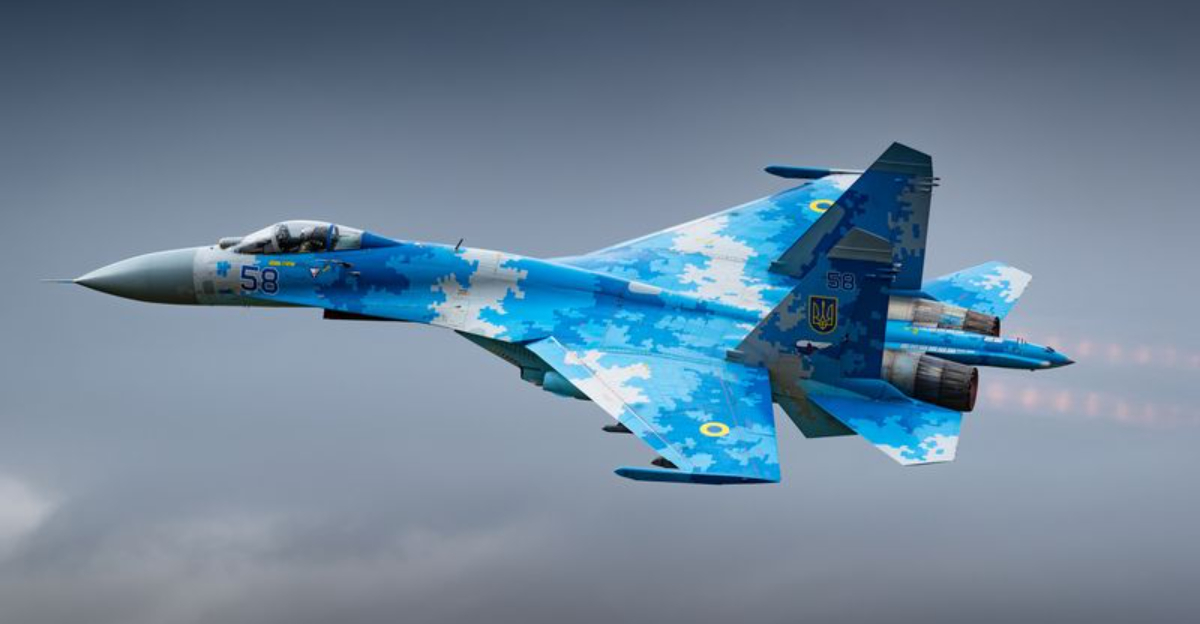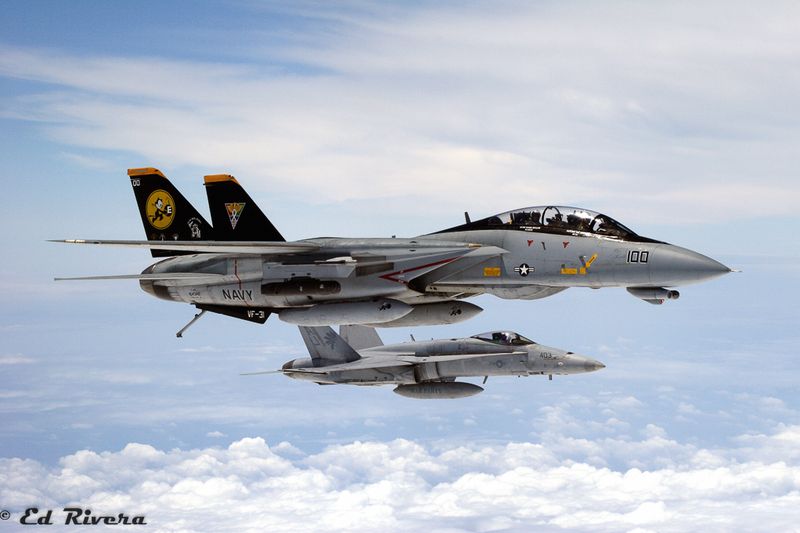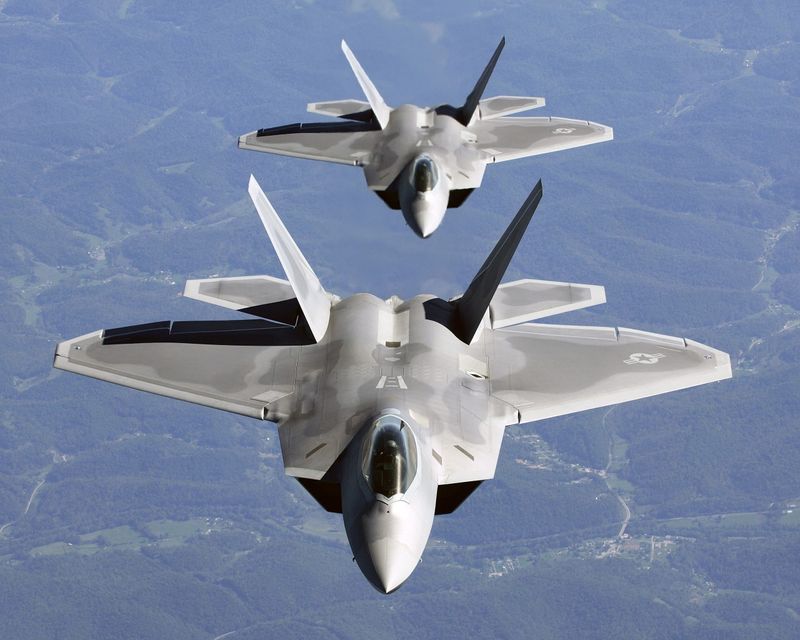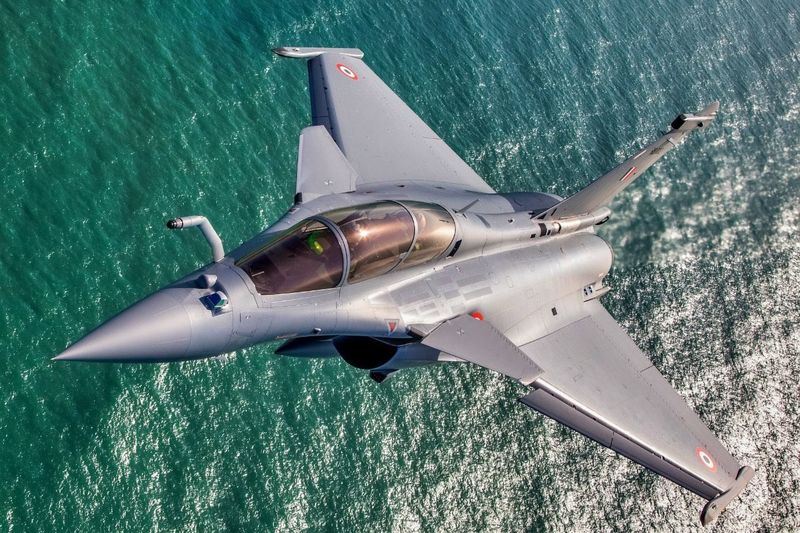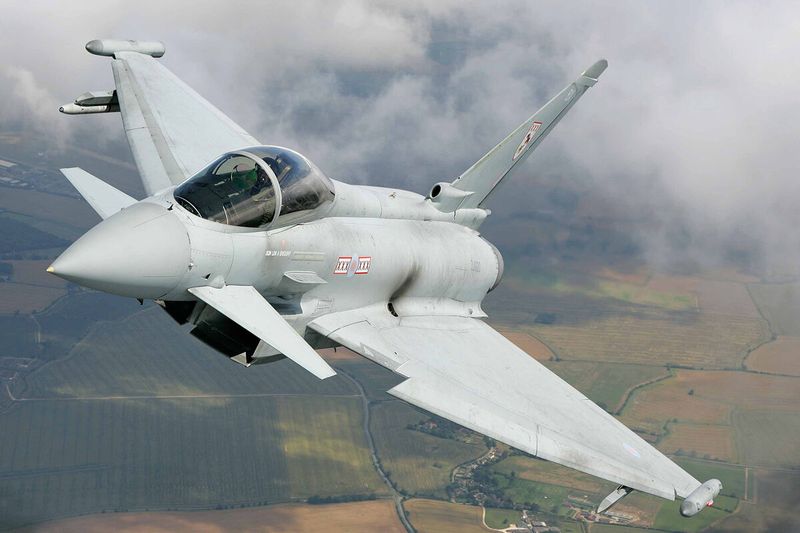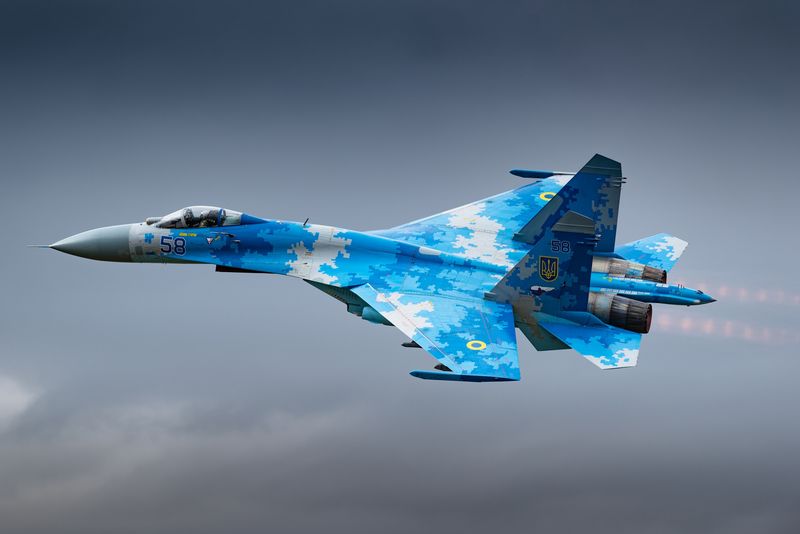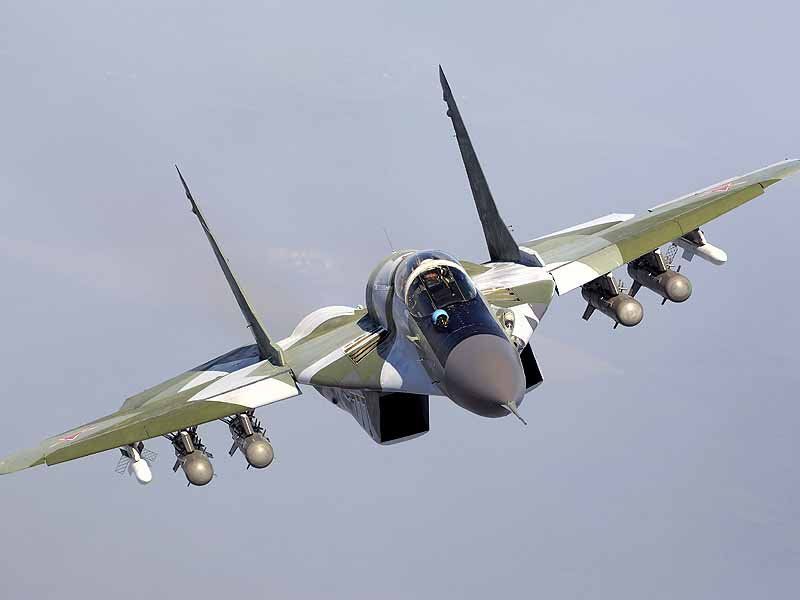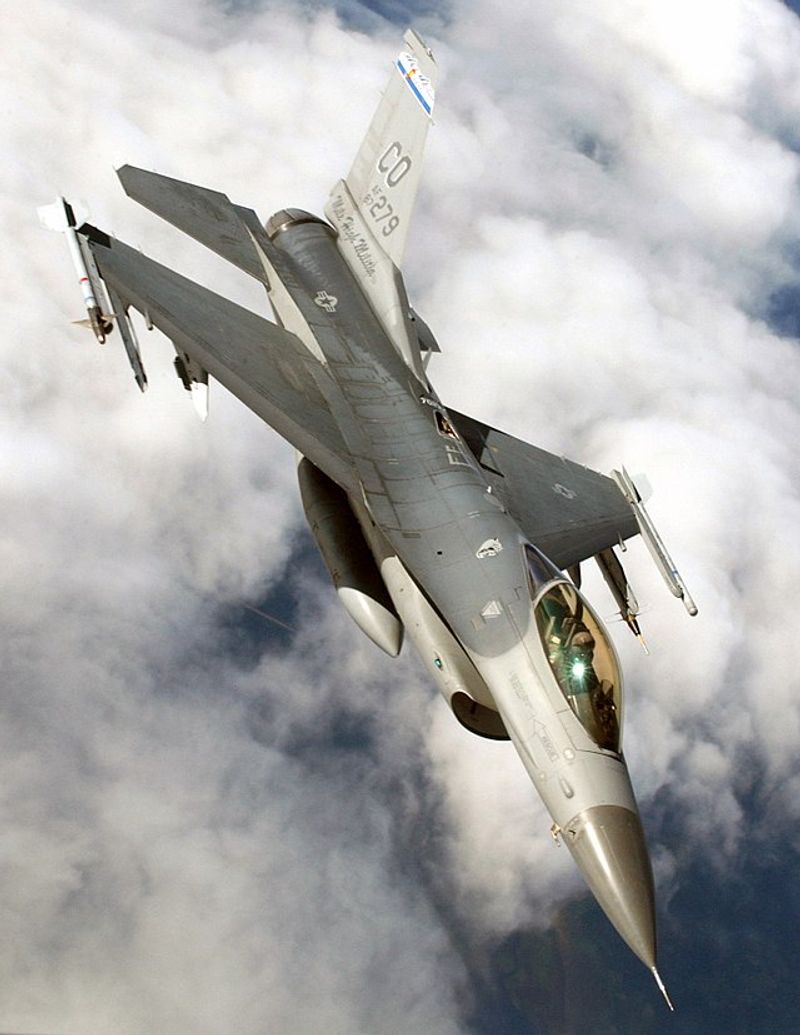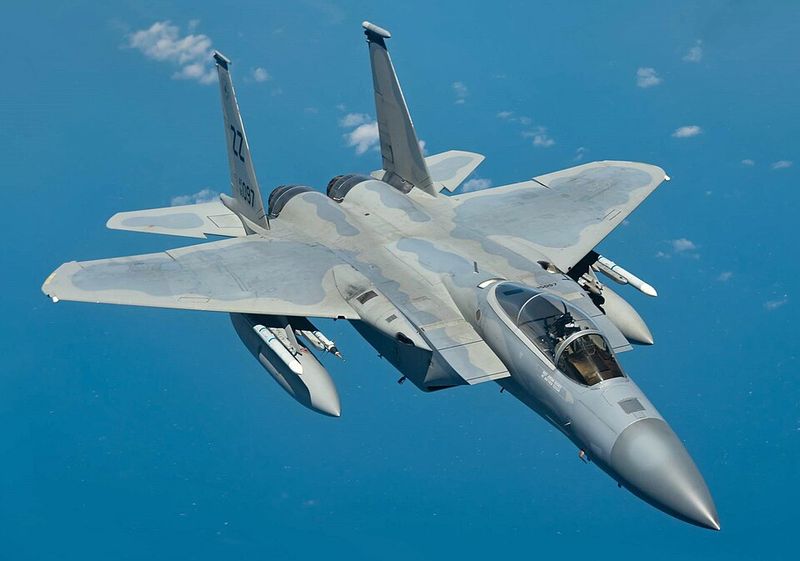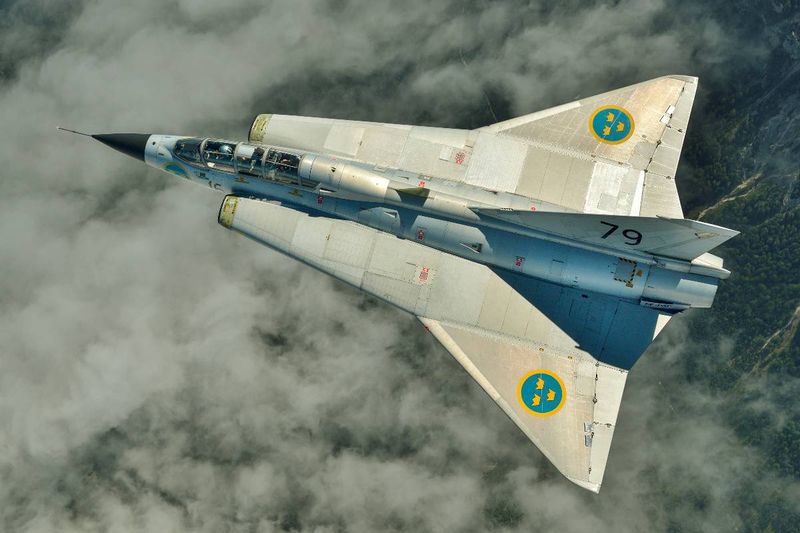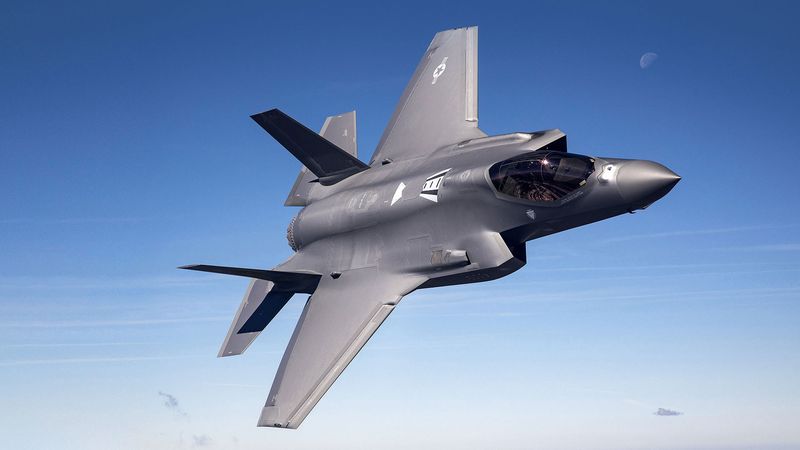Fighter jets aren’t just marvels of engineering—they’re also stunning works of art. From sleek curves to aggressive angles, these high-performance aircraft combine form and function in ways that capture our imagination. Military aviation has produced some truly beautiful machines that look as impressive as they perform. Let’s explore ten of the most visually striking fighter jets ever to take to the skies.
1. Grumman F-14 Tomcat
The star of ‘Top Gun’ wasn’t just famous for Tom Cruise—this naval interceptor genuinely deserves its legendary status. When its wings sweep back for supersonic flight, the Tomcat transforms like a mechanical predator ready to pounce.
Developed in the 1970s to defend carrier groups against Soviet bombers, the F-14’s massive radar and long-range missiles matched its imposing appearance. Its wide stance and muscular fuselage exude power even when parked.
Naval aviators loved the Tomcat not just for its capabilities but for its undeniable charisma. The aircraft’s retirement in 2006 marked the end of an era for perhaps the most photogenic fighter ever built.
2. Lockheed Martin F-22 Raptor
Stealth has never looked this good. The F-22 Raptor represents the perfect marriage of function and aesthetics, with its sharp edges and angular surfaces serving both radar-evading purposes and visual appeal. First flown in 1997, it remains America’s premier air superiority fighter.
Every line and curve on the Raptor was designed with radar reflection in mind, yet the result is strikingly beautiful. Its chiseled appearance suggests speed even when stationary, like a predator constantly ready to strike.
What makes the F-22 truly special is how its advanced technology is wrapped in a package that looks like it came straight from science fiction. It’s both terrifying and beautiful—exactly what you’d want in a dominant air combat fighter.
3. Dassault Rafale
French engineering brings us the Rafale—a fighter that manages to look both elegant and menacing simultaneously. Its canard-delta configuration creates a silhouette unlike anything else in the skies, with small forward canards working in harmony with the main delta wing.
Smooth blending between the fuselage and wings creates an almost sculptural quality. The Rafale seems carved from a single piece rather than assembled from components, giving it a cohesive visual flow that many fighters lack.
Operating from both aircraft carriers and land bases, the versatile Rafale proves beauty doesn’t compromise capability. Its refined appearance reflects French aviation philosophy—that performance and aesthetics should advance together, neither sacrificed for the other.
4. Eurofighter Typhoon
Created through collaboration between four European nations, the Typhoon combines German engineering precision with Italian styling flair. Its distinctive silhouette features forward canards that work with the main delta wing to deliver extraordinary agility.
The aircraft’s narrow waist and widened tail section create a dramatic hourglass figure rarely seen in fighter design. From the front, its air intakes frame the cockpit like the eyes of a predatory insect, enhancing its aggressive stance.
Despite its complex multinational development, the Typhoon emerged with a cohesive, purposeful aesthetic. Its proportions convey explosive energy waiting to be unleashed—like a sprinter in the starting blocks, muscles tensed for action.
5. Sukhoi Su-27 “Flanker”
Russian aircraft design reached its aesthetic peak with the magnificent Su-27. Unlike Western fighters with their sharp angles, the Flanker embraces flowing curves and organic shapes that somehow make this massive fighter look graceful despite its size.
Those distinctive leading-edge extensions curve forward from the wings like fangs, improving maneuverability while giving the jet its signature shark-like profile. Twin tails rise majestically above powerful engines that can propel this beauty to speeds over Mach 2.
The Flanker family has spawned numerous variants still serving worldwide. Its balanced proportions and flowing lines make it instantly recognizable—a testament to how something designed purely for lethal efficiency can achieve genuine beauty.
6. Mikoyan MiG-29 “Fulcrum”
Small but perfectly formed, the MiG-29 packs tremendous power into a compact airframe. Its distinctive chin-mounted air intakes give the Fulcrum a snarling, aggressive face unlike Western designs of the same era.
Soviet engineers created an aircraft of surprising grace despite Cold War manufacturing limitations. The MiG-29’s proportions feel instinctively right—balanced between the massive engines that dominate the rear and the cockpit section that leads the design.
Widely exported around the world, the MiG-29 remains a favorite at airshows for its spectacular maneuverability and distinctive profile. The Fulcrum proves beauty in fighter design isn’t exclusive to Western nations—Soviet aerodynamicists created a genuine classic that still turns heads decades later.
7. General Dynamics F-16 Fighting Falcon
Nicknamed “The Viper” by pilots, the F-16 revolutionized fighter design with its blended wing-body and relaxed stability concept. Its bubble canopy provides unmatched visibility while creating the jet’s most distinctive visual feature—like the clear dome atop a sleek, purposeful body.
Everything about the F-16 looks fast. The single-engine design creates a lean, athletic silhouette without the bulk of twin-engine fighters. The ventral strakes beneath the fuselage enhance its predatory appearance.
Though designed in the 1970s, the F-16’s clean lines remain thoroughly modern. Its elegant simplicity has aged remarkably well—proving that good design is timeless. With over 4,600 built and still in production, this sports car of the skies continues to set the standard for fighter aesthetics.
8. McDonnell Douglas F-15 Eagle
Absolute air dominance takes physical form in the mighty F-15 Eagle. While some fighters aim for stealth or compactness, the F-15 proudly embraces its massive size and overwhelming power. Those enormous twin tails standing tall above the fuselage create an unmistakable silhouette.
The Eagle’s broad shoulders come from wings mounted high on the fuselage, giving it a stance like a weightlifter ready to explode into action. Massive engine intakes feed the powerful twin engines that provide the F-15’s legendary thrust-to-weight ratio.
With an undefeated combat record of over 100 victories and zero losses, the F-15’s appearance perfectly matches its capabilities. The Eagle proves that sometimes bigger is indeed better—both in performance and visual impact.
9. Saab 35 Draken
Sweden’s Cold War interceptor brought us one of aviation’s most distinctive shapes. The Draken (meaning “Dragon”) featured a revolutionary double-delta wing that looked like nothing else in the skies when introduced in 1955.
This unique wing created a continuous curved leading edge from nose to wingtip. The result was both visually striking and aerodynamically brilliant—allowing supersonic flight while maintaining good handling at low speeds for landing on Sweden’s improvised forest roads.
The Draken’s clean lines make it appear modern even today, more than six decades after its first flight. Its single-piece canopy and needle-nose complete a design that represents pure aerodynamic elegance—proving sometimes the simplest shapes are the most beautiful.
10. Lockheed Martin F-35 Lightning II
The newest entry on our list brings stealth design into the 21st century. While the F-22 embraced sharp angles, the F-35 introduces more subtle curves and blended surfaces that hide its radar signature while creating a thoroughly modern aesthetic.
Every intake, every panel line, and every surface has been meticulously sculpted to balance radar-evading properties with aerodynamic needs. The result is a fighter that looks purposeful and cohesive from every angle—the aviation equivalent of a modern sports car.
Unlike earlier stealth aircraft with their faceted surfaces, the F-35’s smoother contours represent advances in computational design. Its appearance hints at the incredible technology hidden beneath its skin, making it look as advanced as it actually is.
